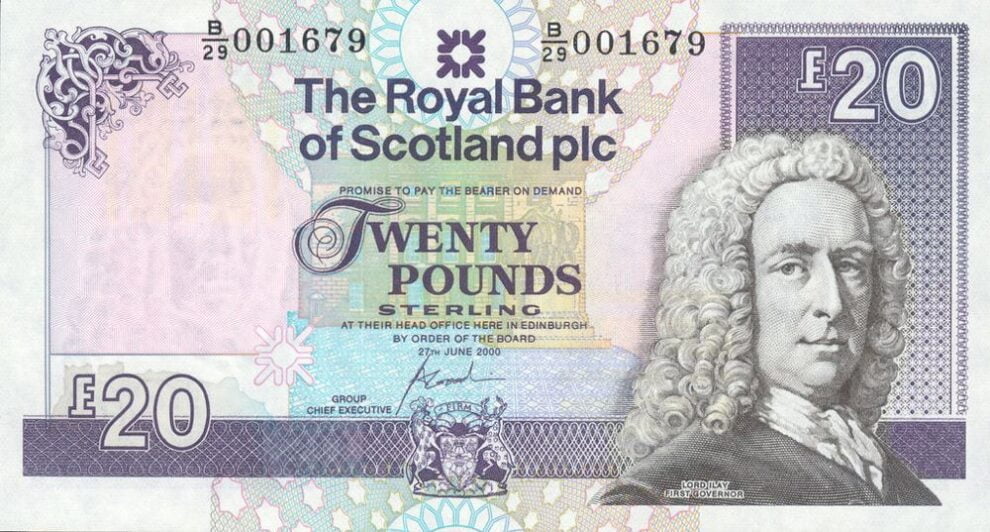Scottish money was abolished as a circulating currency at the Act of Union in 1707. However, the valued rent of land and, in many places, feu duties and ministers’ stipends, schoolmasters’ salaries, and other parochial payments were still reckoned by the pound Scots and the merk, or mark, for some considerable time after the union. However, payment was made in English pounds sterling.
Both the English and the Scottish pound were made up of 20 shillings, each of 12 pence. Thus there were 240 pence in a pound. But there were 12 Scots pounds to the English pound. The merk was two thirds of a Scottish pound, or 13 shillings and 4 pence. Information below sourced from www.thereformation.info/old_scottish_money.htm.
| Scottish value | Scottish name and value | Sterling value |
| 1 penny | 1 penny or doyt | one twelfth of a penny |
| 2 pennies | 1 bodle | one sixth of a penny |
| 2 bodles | 1 plack or groat | one third of a penny |
| 3 placks | 1 bawbee * | half a penny |
| 12 pennies | 1 shilling | 1 penny |
| 20 shillings | 1 pound | 20 pence |
| 13 shillings and 4 pennies | 1 merk or mark | 13 pence |
| 18 merks or marks | 12 pounds Scots | £1 |
* The bawbee was originally a copper coin worth ha’penny (half a penny); in Mary Queen of Scots’ time it was worth 3 pence Scots money, and later raised to 6 pence.
Explanation of Currency Abbreviations
Latin names were used for the abbreviated money forms, so where 2d meaning two pence, the ‘d’ abbreviation derives from ‘denarius’:
| nglish | Latin | Currency abbreviation |
| Pounds | Librum | L |
| Shillings | solidus | s |
| Pence | denarius | d |
Source: John Gray Centre











